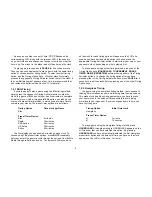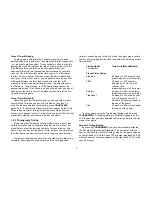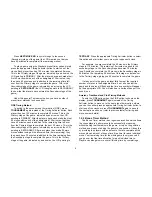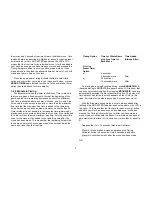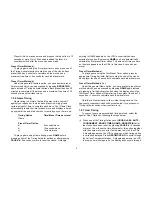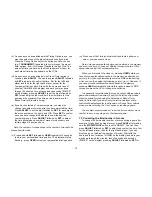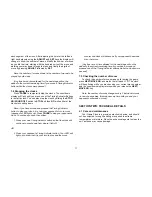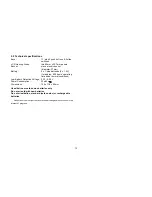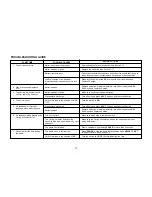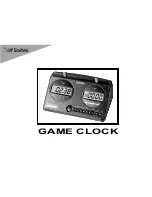
5
Preset Timer Method a)
To play a game using this first 1 minute preset timer option,
simply decide who is going first, then press the relevant opponent’s
(i.e.. the side to play second’s) Timing Activator button to start the
appropriate clock. Each player then has 1 minute on the clock, but
the difference between this and the Blitz game is that your
opponent’s thinking time is proportionally increased as your time
runs out. You will notice that as the time on your LCD decreases,
the time on your opponent’s screen proportionally increases and
vice versa. If either your own or your opponent’s time runs out (the
difference between the two clock’s reaches 2 minutes, or 20
minutes for the second preset timer method), the zeros flash and
the’’time’s up’’ symbol (see g. in LCDs Section) appears on the
appropriate screen. If the sound is on you will also hear a series of
beeps when the time runs out. The player with no time left on the
clock has lost the game.
Preset Timer Method b)
Under this general Hourglass option, you have another preset
timer method, for which you have 10 minutes on the clock. To
switch to the second preset timer option, press HOURGLASS
again. This 10 minute time allocation will then appear on the LCDs.
Press the appropriate Timing Activator button to start either your
own or your opponent’s clock. Timing continues as it did for the first
preset timer method, but with more time on the clocks.
1.2.3 Tournament Timing
When using the Tournament timing method, each player has a
certain amount of time to complete a fixed number of moves. If a
player fails to meet the required number of moves in the set time
frame, he or she has lost the game.
(Note, a player can make more
than the required number of moves within the given time frames).
Tournament games have more than one stage for the players to
complete. Some games have as many as three timing periods
(primary, secondary and tertiary) in which they must play a certain
number of moves against the clock (see below for details on preset
timer options):
Timing Option
Time Limit (Moves/Minute)
Tournament
Preset Timer Option
Standard
40 moves in 120 minutes, then
remaining moves in 60 minutes
FIDE
40 moves in 120 minutes,
followed by 20 moves in 60
minutes, then
remaining moves in 30 minutes
Amateur
30 moves in 90 minutes, then
remaining moves in 60 minutes
Traditional
40 moves in 120 minutes, then
every subsequent set of 20
moves in 60 minutes (repeat to
the end of the game)
Club
30 moves in 30 minutes (repeat
to the end of the game)
To play a game using the Tournament timing method, press
TOURNAMENT. A triangle pointing to PRIMARY appears on the
LCD to show that you have selected this option and are in the first
stage of the game.
Standard Timing Method
By pressing TOURNAMENT you have automatically selected
the first preset timer option (Standard). The amount of time you
have on the clock for the first (Primary) stage of the game appears
on the left hand LCD (in this case, 120 minutes, displayed as 2:00),
while the number of moves appears on the right hand LCD, (in this
case 40 moves).




